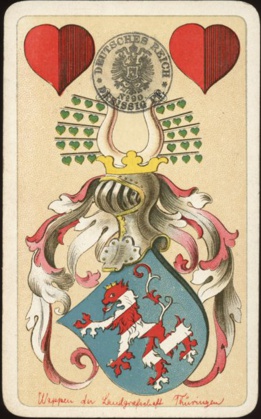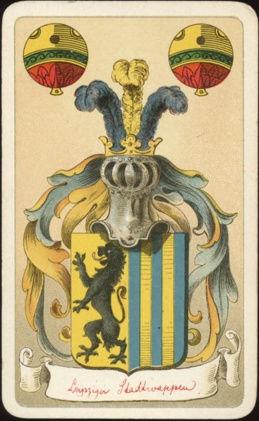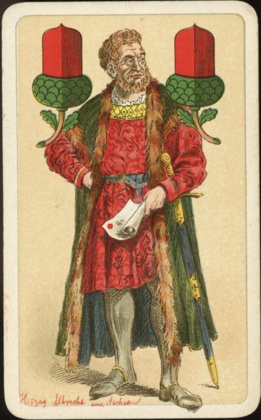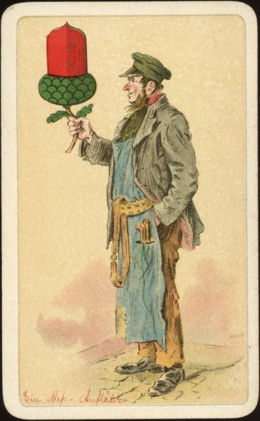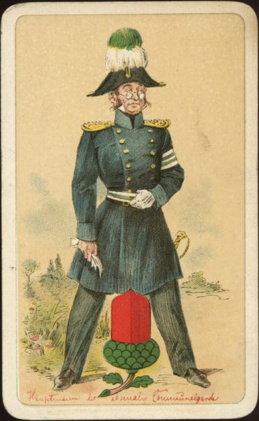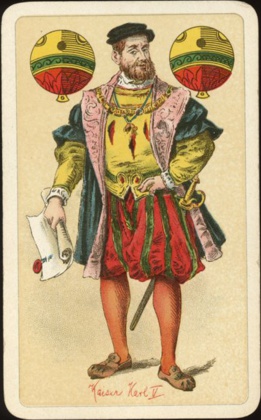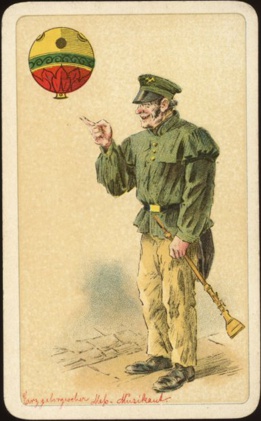|
June
2023
It was a busy month
again, full of appointments with friends and collectors. And of course
there was the Collectors Day in the Turnhout museum. I also participated
in 2 auctions this month. A French auction house in Bordeaux brought me
the Joker of the Month and some decks to trade. None of them came close to
be on this page. More important was the English auction of some decks from
the Dudley Ollis collection. I won 2 lots there, but they will hopefully
arrive here in July, so one of them will be shown as Deck of the Month
then.
|
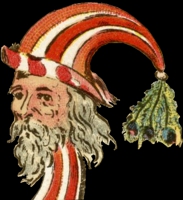
|
|
So for this month I had to
look for a deck within our collection and as I was just going through the
albums with old German decks to reunite some of them with their pip cards,
I came across this deck. I only had to check if I hadn't shown it before elsewhere
on this website. I've always liked the deck, so I was surprised to find
that I hadn't. It probably came in a month with an even more
appreciated deck for this spot. |
I should have shown this deck last year around
this time, because in 2022 it would have been the 125th anniversary of the then
called STIGA exhibition. Until 1897 this exhibition was known as the Leipziger
Messe, a yearly trade fair in Leipzig, Germany. This trade fair has a long
history, which can be traced back to the 12th century. Unofficially the first
Leipziger Messe is dated as around 1165.
Until 1897 it was a simple trade fair, but in that year it was upgraded to a
more elaborate "Mustermesse" (Sample trade fair), with pavilions and
entertainment. However, this deck is still referred to among collectors as the
Leipziger Messe deck. It has been reprinted in Altenburg around 1970, but here's
the original deck.
|
This detail on the 9 of Acorns reveals the purpose of this deck: |
|
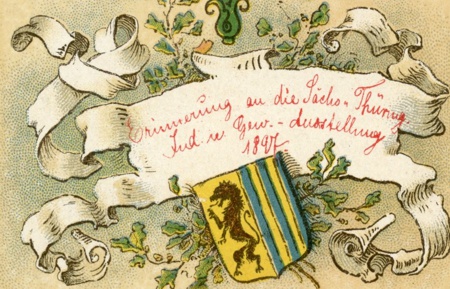
|
|
"Erinnerung an
die Sächs(isch) - Thüring(ische) Ind(ustrie) u(nd) Gew(erbe)
Ausstellung 1897" (now shortened to STIGA).
Translated in English:
Remembrance of the Saxon- Thüringen Industrial and Commercial
Exhibition 1897. |
The
deck was printed and published by the Altenburger Spielkartenfabrik Schneider
& Co. in 1897. It was designed by Arthur Lewin. The deck is printed in chromolithography and has gold corners. The
deck uses the German suits (Leaves, Hearts, Acorns and Bells) and ranking King,
Ober, Unter. The Ober and Unter can be distinguished by the place of the suit
sign: Ober on top, Unter at the bottom. The kings have 2 suit signs, but can
easily be distinguished from the "Daus" (ace), because the aces never
depict a person. The courts in this deck show different single figures.
|
|
|
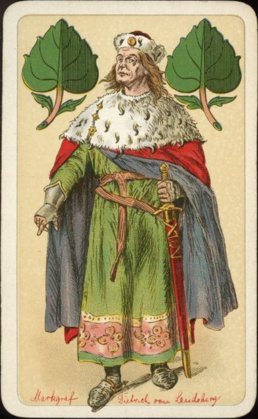 |
Police officer 1840-50
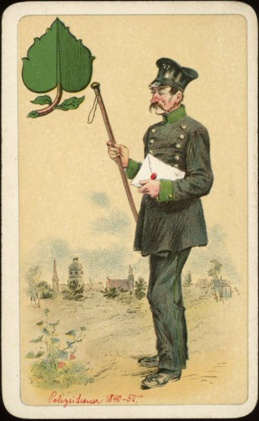 |
Member of the Kommunal
guards
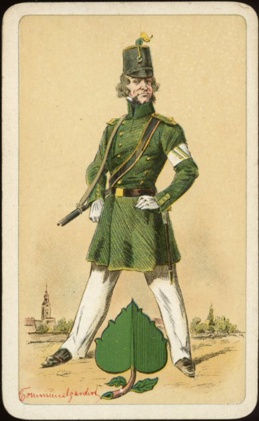 |
|
Count Dietrich of
Landsberg |
|
|
|
|
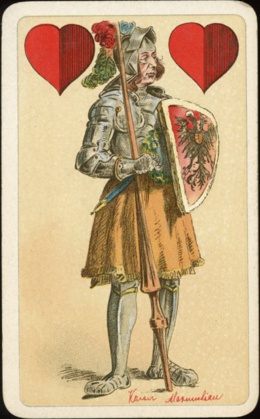
|
The Brühl was the
"world fur trade" street in Leipzig
 |
Student from the
(18)40's
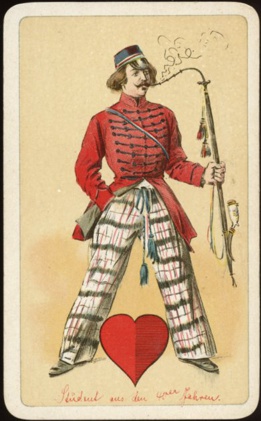 |
| Emperor
Maximilian |
BACK
TO PRESENT MONTH









